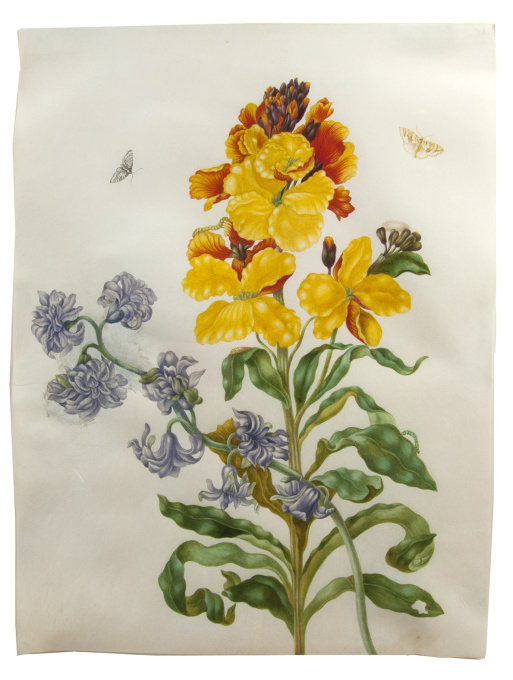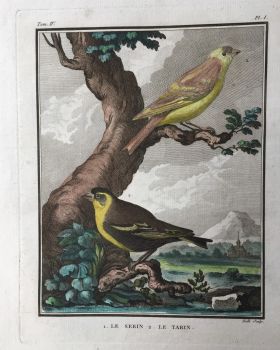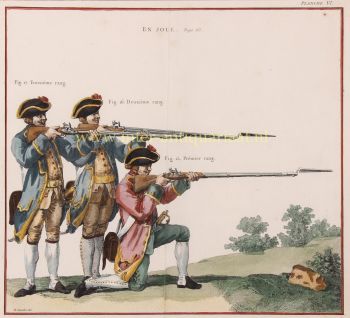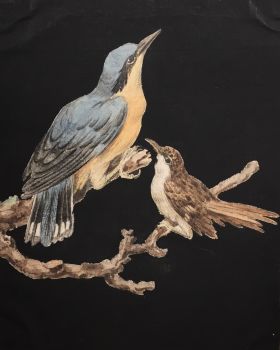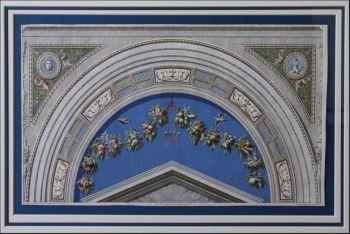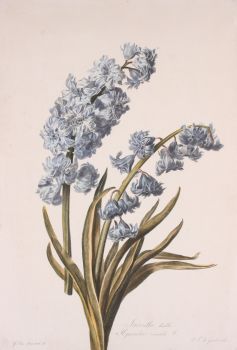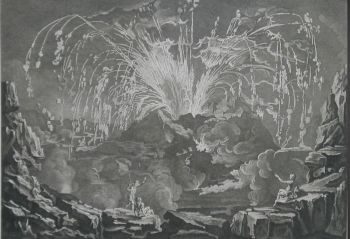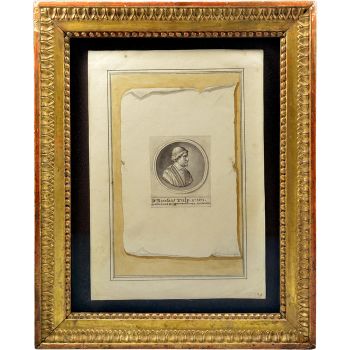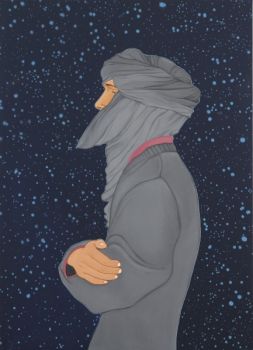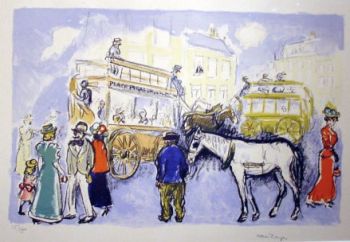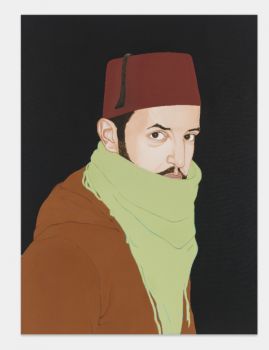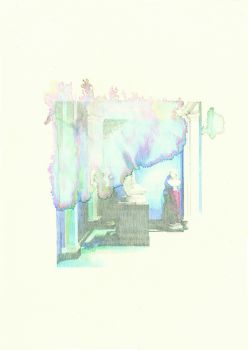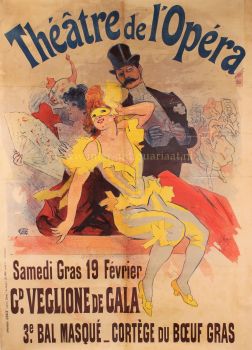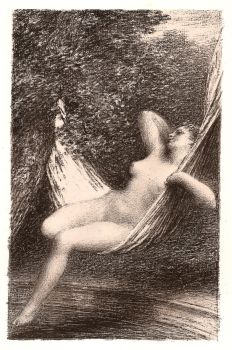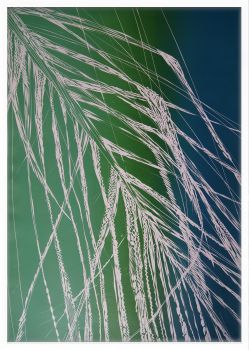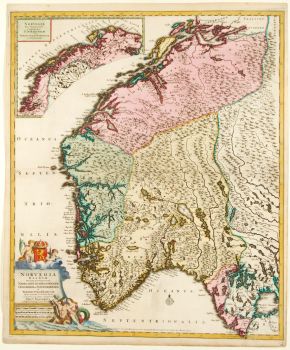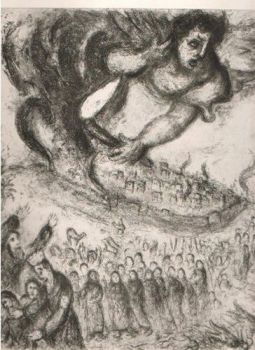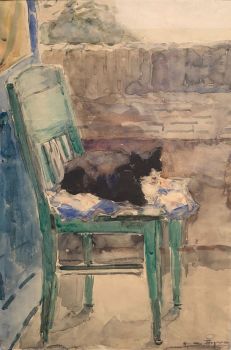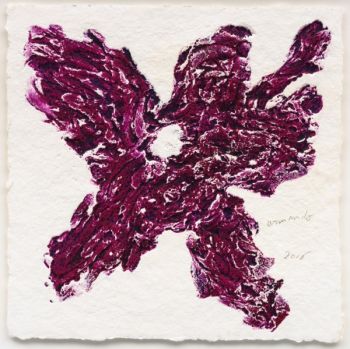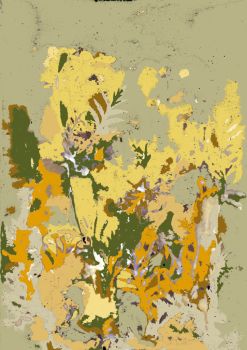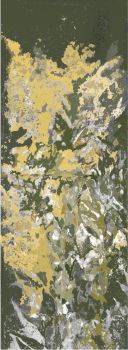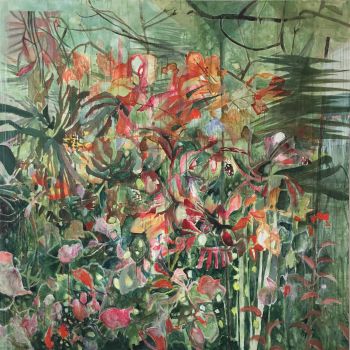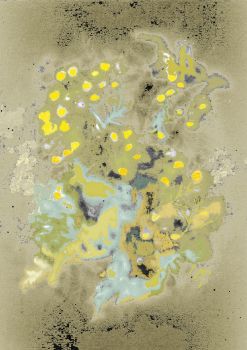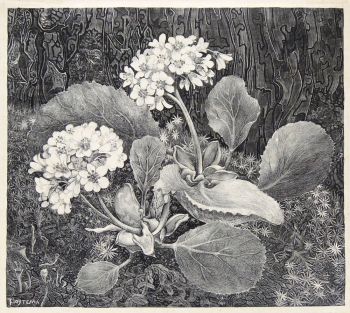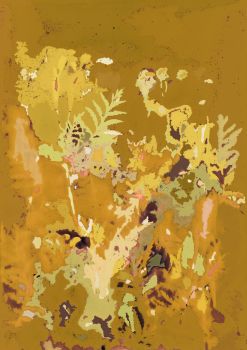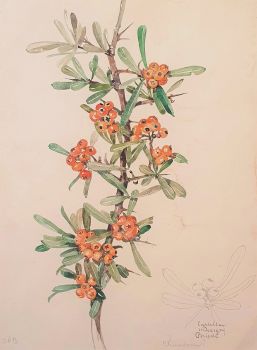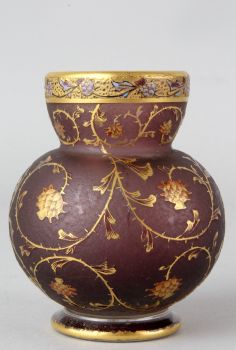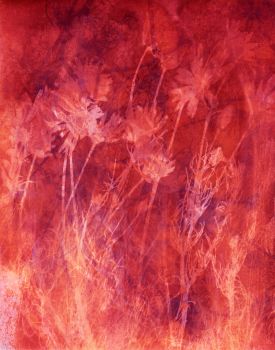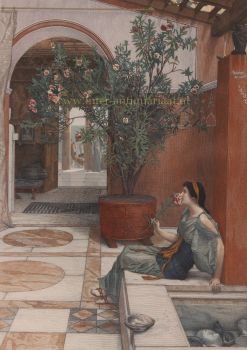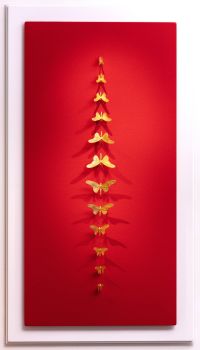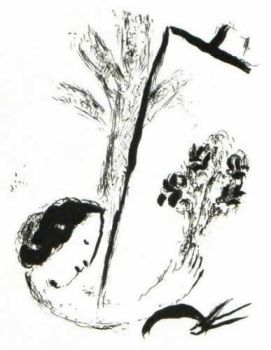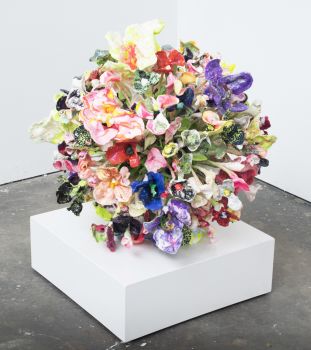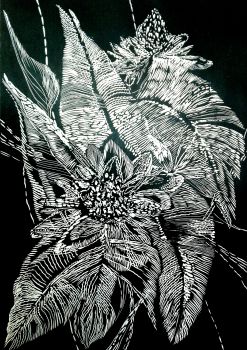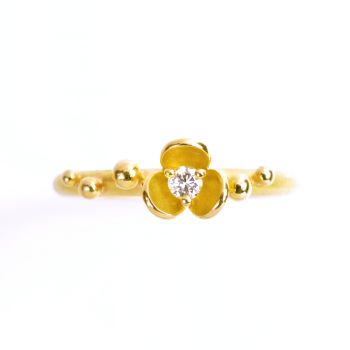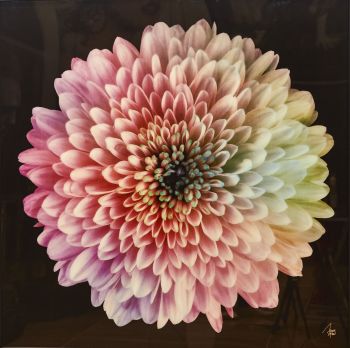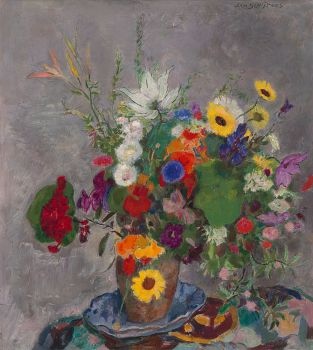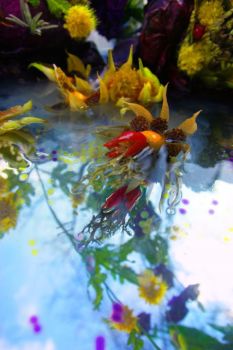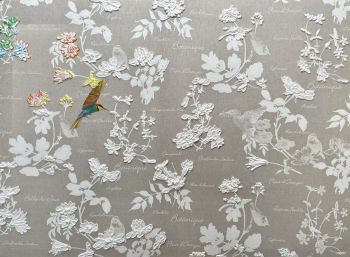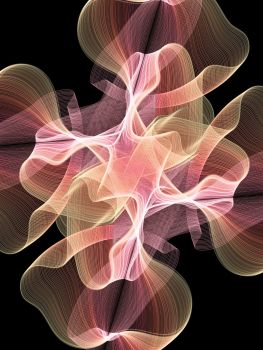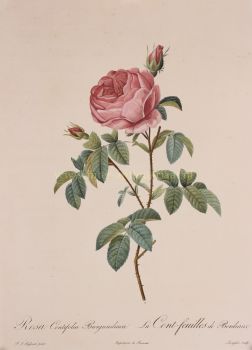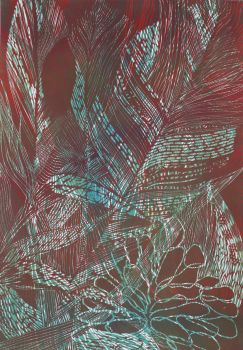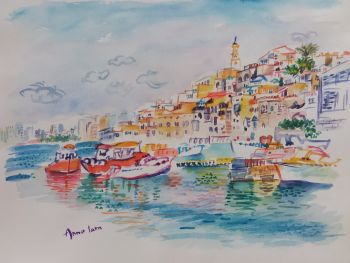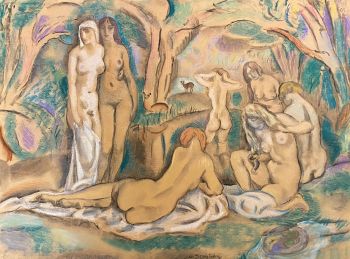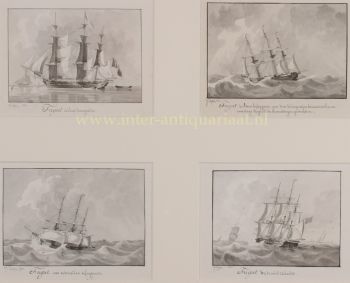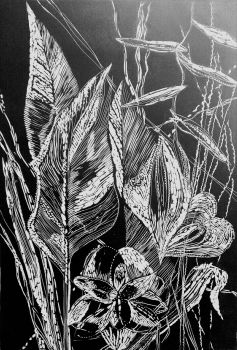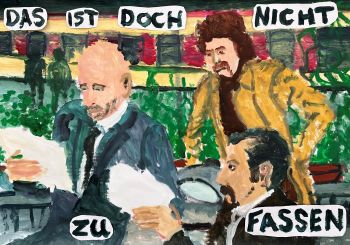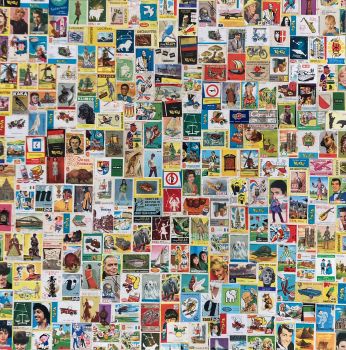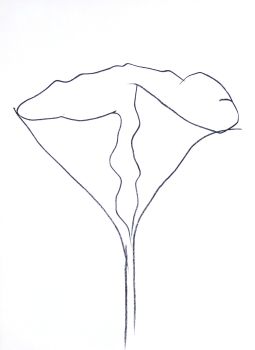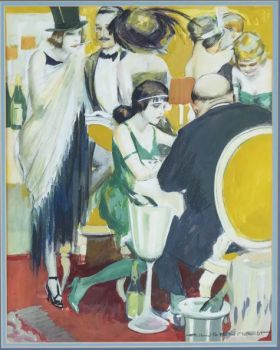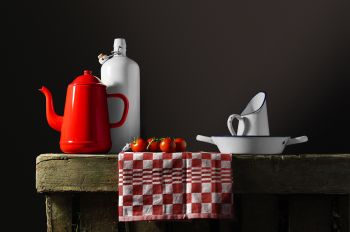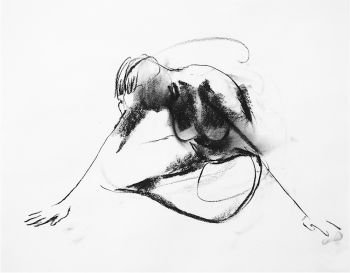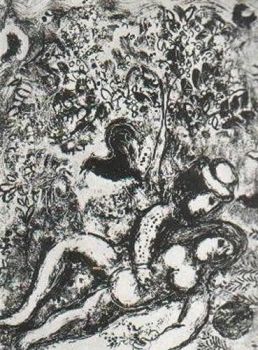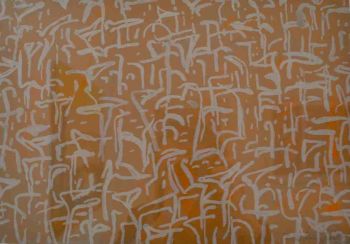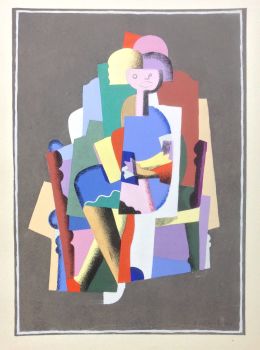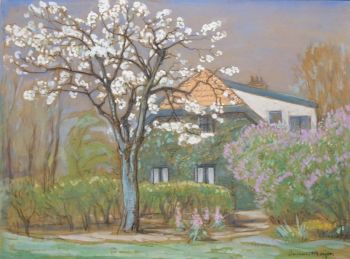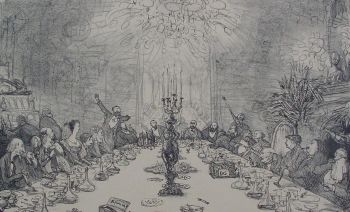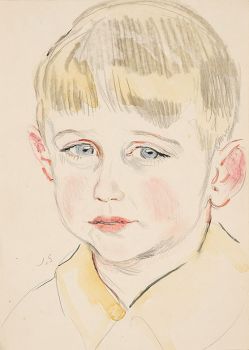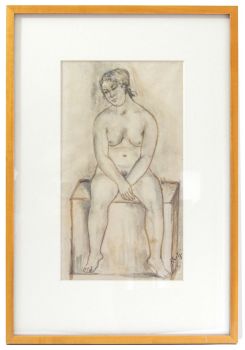Flower watercolour with moths, larvae and pupae, by the daughter of Maria Sibylla Merian 1700
Johanna Helena Herolt
PapelAcuarela
29 ⨯ 38 cm
Actualmente no disponible a través de Gallerease
- Sobre la obra de arte[Watercolour of a wallflower and a double hyacinth, with inchworm moths, larvae and pupae].
[Amsterdam, ca. 1700]. Watercolour drawing (38 x 29 cm) on extremely fine white parchment, said to be uterine lamb, showing a wallflower and a double hyacinth with two inchworm moths in the air (2 different species) and two inchworms and two pupae on the leaves and flowers. Framed.
Characteristic original watercolour botanical drawing by Johanna Helena Herolt (1668-post 1721), the eldest daughter of Maria Sibylla Merian and Johann Andreas Graff. It shows a wallflower (Cheiranthus cheiri) and double hyacinth (Hyacinthus orientalis) with two inchworm moths (Geometriae) in the air, two inchworms and two pupae. She probably drew it in Amsterdam around 1700. Though she still remains in the shadow of her mother, she was a fine flower and insect artist in her own right and there is growing appreciation of her work. Her watercolours, more baroque than her mother's and often with brighter colours, radiate vigour and vivacity: the flowers, painted with intensity in every detail, really come to life.
Reitsma, p. 135, notes that the prices for the flower watercolours increased with the number of insects, so the present watercolour must have been unusually expensive. Most of Herolt's work is numbered and the present watercolour is numbered "145"[?] on the back. The published catalogues rarely note the numbers, but we understand the highest number known is 164.
Characteristic watercolour in fine state of preservation, with certificate of authenticity from Dr. S. Segal, Amsterdam. Herolt herself may have revised the upper part of the hyacinth.
Reitsma, Maria Sibylla Merian & dochters, ill. 110 (p. 147; a nearly identical drawing of the same wallflower specimen with 1 butterfly); Wettengl, Maria Sibylla Merian 1647-1717, kunstenares en natuuronderzoekster, no. 120 (ill. 44 on p. 85; a similar watercolour including the same wallflower specimen, with no insects). - Sobre el artistaSegún el RKD era la hija mayor de los pintores Maria Sibylla Merian y Johann Andreas Graff, y de ellos aprendió a pintar junto con su hermana Dorothea Maria Graff. Aunque nació en Frankfurt, en 1670 la familia se trasladó a Nuremberg, donde ella fue criada. En 1681 su madre regresó a Frankfurt sin su padre, para vivir con su madre después de la muerte de su padrastro Jacob Marrel. Aunque Johann Graff se unió a su familia más tarde, en 1686 Merian dejó a su esposo y se mudó con sus dos hijas y su madre a una comunidad religiosa de labadistas en Wieuwerd, Frisia. Johann Graff hizo varios intentos de reconciliación pero finalmente regresó a Alemania. En 1691, las cuatro mujeres se mudaron a Amsterdam, donde establecieron un estudio de pintura de flores y temas botánicos, continuando el trabajo de Merian en "El libro de Caterpillar". Johanna se casó con el comerciante Jacob Hendrik Herolt, también ex labadista, el 28 de junio de 1692. Tuvieron dos hijos y Johanna comenzó a asumir sus propios encargos, trabajando para Agnes Block y Amsterdam Hortus como su madre. Johanna se mudó con su esposo a Surinam en 1711, donde probablemente murió, en algún momento después de 1723. Obras [editar] Una serie numerada de 49 dibujos firmados por Herolt en vitela se encuentran en la colección del Museo Herzog Anton Ulrich, en Brunswick. [2] Esta serie fue posiblemente un encargo de la botánica y coleccionista menonita Agnes Block. Otros dibujos de Herolt se encuentran en el Museo Británico. [2]
Artwork details
Categoría
Tema
Material y Técnica
Colour
Related artworks
- 1 - 4 / 24
- 1 - 4 / 24
- 1 - 4 / 24

